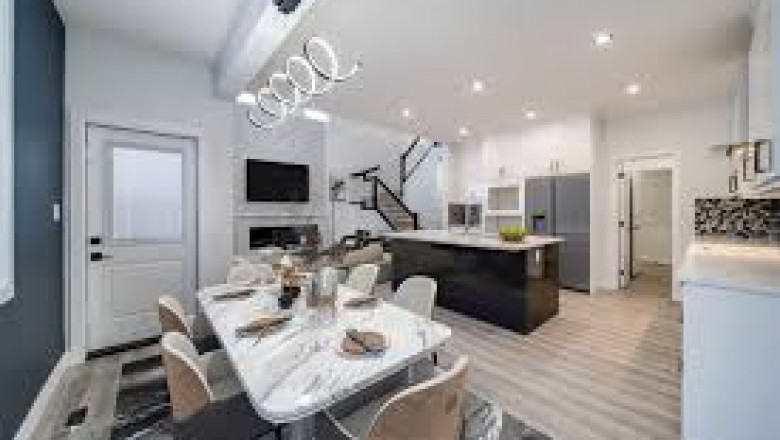views
Introduction
Virtual staging is the process of using software to add furniture, décor, and design elements to photos of empty rooms. Instead of physically staging a home, which can be expensive and time-consuming, virtual staging gives you the same visual effect without the hassle.
The digitally staged images are then used in online listings, social media, and marketing brochures to help buyers imagine what the home would look like fully furnished.
How Does Virtual Staging Work?
The process of virtual staging is simple and quick:
-
Take High-Quality Photos – Clear, well-lit images of each room are taken.
-
Upload to a Virtual Staging Platform – The photos are sent to professionals who specialize in virtual staging.
-
Design and Style – Using digital tools, furniture and accessories are added to the photo.
-
Final Touches – The design is reviewed and finalized before it’s sent back for use.
Most virtual staging companies offer a turnaround time of 24 to 48 hours.
Benefits of Virtual Staging
There are many reasons why real estate professionals are turning to virtual staging:
1. Cost-Effective
Physical staging can cost thousands of dollars. Virtual staging is much more affordable—often as low as $20–$50 per image.
2. Time-Saving
You don’t need to move furniture or hire moving crews. Everything is done digitally and quickly.
3. Customizable Design
You can choose from a variety of design styles—modern, traditional, farmhouse, etc.—to match the target buyer’s taste.
4. Increases Buyer Interest
Visually appealing listings get more attention online, leading to faster sales and more showings.
5. Perfect for Empty or Unfurnished Homes
Vacant homes often feel cold and lifeless. Virtual staging brings warmth and personality to those spaces.
Is Virtual Staging Realistic?
Yes, if done professionally, virtual staging looks very real. However, it’s important to work with a trusted provider. Poorly done staging can look fake and reduce buyer trust. Good virtual staging uses lighting, shadows, and design balance to ensure the photos look natural.
To avoid confusion, it’s always a good idea to label the photos as "virtually staged" so buyers know the images are digitally enhanced.
Best Uses for Virtual Staging
Virtual staging works well in many scenarios:
-
Empty homes that don’t yet have furniture
-
Rental properties that need appealing visuals
-
Luxury homes to showcase design potential
-
Fixer-uppers to help buyers see beyond outdated interiors
-
Commercial real estate like offices or retail spaces
Related more articles, virtual staging ai
Virtual Staging vs. Traditional Staging
While both have benefits, virtual staging is ideal for sellers looking to save time and money while still making a great impression.
Tips for Effective Virtual Staging
Here are some best practices to make your virtual staging as effective as possible:
-
Use High-Resolution Photos – Clear images make the staging look more realistic.
-
Choose the Right Style – Consider your target market (e.g., modern designs for city apartments).
-
Avoid Over-Staging – Keep it clean and minimal to allow buyers to imagine their own style.
-
Be Transparent – Mention in your listing that some images are virtually staged.
-
Work with Professionals – Quality matters, especially for online impressions.
Future of Virtual Staging
As technology improves, virtual staging will become even more realistic and interactive. Some companies are now offering 3D tours and augmented reality (AR) that let buyers place furniture virtually on their phones.
This means buyers won’t just look at photos—they’ll interact with the home digitally, increasing the chances of a sale.
Conclusion
Virtual staging is changing the real estate game. It offers a powerful, affordable, and visually impressive way to market properties. If you’re trying to sell a home quickly or want to stand out in a crowded online market, virtual staging is a smart move. With its blend of technology, creativity, and convenience, it’s no wonder virtual staging is becoming the new normal in real estate marketing.
See more related articles, ai detector













Comments
0 comment